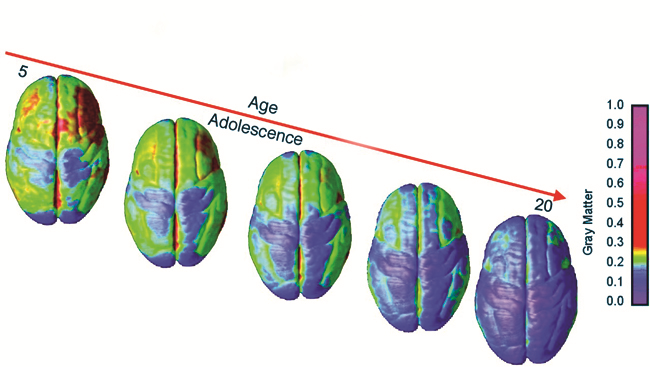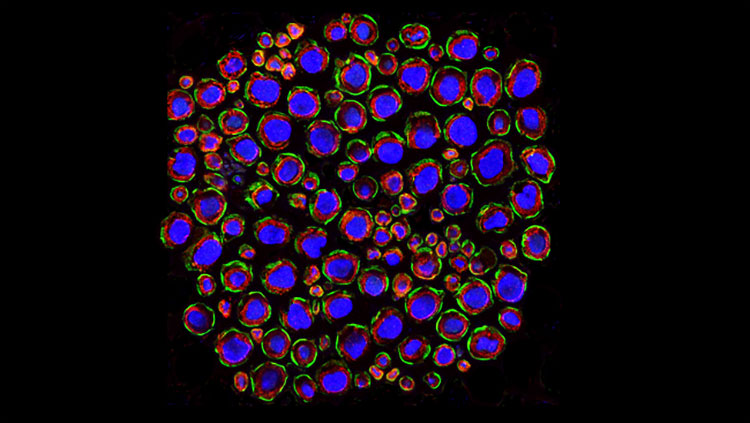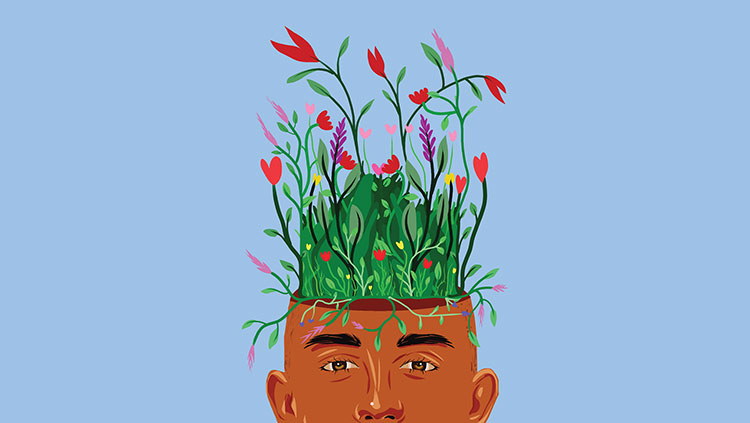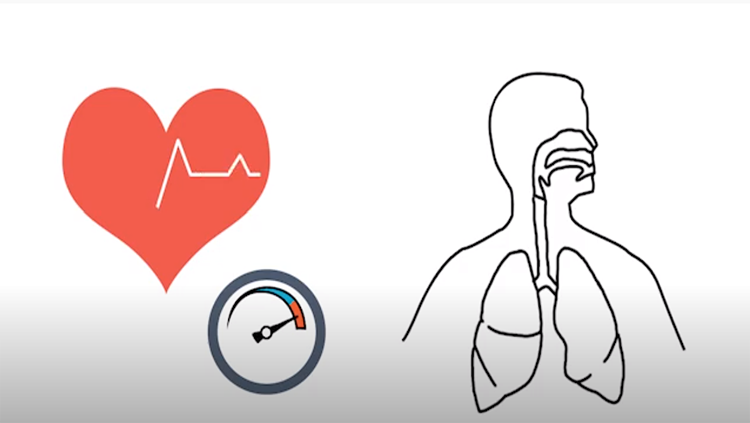Hormones and the Adolescent Brain
- Published9 Dec 2015
- Reviewed9 Dec 2015
- Author Matthew Davis
- Source BrainFacts/SfN

The brain goes through many changes during adolescence, including the maturation of the cerebral cortex — the outer layer of the brain that is important for reasoning and abstract thinking. This image shows how this area develops during this time, with the blue color indicating areas that are more mature.
Image adapted from Gogtay N, et al. Dynamic mapping of human cortical development during childhood through early adulthood. PNAS 2004;101(21): 8174 - 79, Fig. 3.
The hallmark changes of puberty — like the development of facial hair in boys and the start of menstruation in girls — are brought about by a flood of hormones. During this time, the adolescent brain is changing in important ways, and scientists are now beginning to understand how hormones also play a role in some of these changes
A Brain on Steroids
The main hormones in question are estrogen and testosterone. Often grouped together as “sex steroids” or “gonadal hormones” because they are manufactured in the gonads — the ovaries in girls and the testes in boys — these hormones are present before birth, but their levels spike during puberty. Scientists have long understood that these hormones can affect the nervous system. For example, testosterone can play a prominent role in stimulating sex drive, and there is evidence that estrogen levels can influence some types of learning and memory.
But neuroscientists are increasingly interested in how the flood of testosterone and estrogen unleashed by puberty plays a role in driving fundamental and permanent changes in brain anatomy. Studies in animals and humans indicate that during adolescence, these hormones bind to receptors on brain cells, altering their activity and contributing to the formation of brain circuitry.
Building the Adult Mental Machine
For example, there is evidence that when they reach the brain, hormones secreted by the gonads help stimulate the growth of new axons, the wire-like extensions of neurons that enable them to send signals to other neurons. During adolescence, axons can be observed rapidly “sprouting” new connections within and between different regions of the brain.
Also, recent studies in both animals and humans show that during adolescence, estrogen and testosterone help stimulate and shape the production of white matter. White matter consists of support cells (glia) and axons coated in a fatty material called myelin. Glia make myelin, which grows and wraps around axons to protect them and speed up neural transmission. This white matter growth, called myelination, is critical to the cognitive advances of adolescence as it gives axons the ability to transmit information about 100 times faster than unmyelinated axons. Scientists also have recently learned that myelination can alter the timing and coordination of signaling in the brain, which may allow the brain to engage in more complex mental processes.
The hormone-driven increase in white matter is particularly important in helping the brain mature because it dramatically improves the flow of information between various parts of the brain, says Jay Giedd, a professor of psychiatry at the University of California, San Diego, who uses brain imaging to study adolescent brain development.
“It’s what gives us the ability to integrate and process information from multiple sources: our emotions, memories, and surrounding environment,” he says.
While the adolescent brain is adding and strengthening some connections, it is also trimming others, and estrogen and testosterone are believed to play a role in this process, called synaptic pruning. This process eliminates synapses, the points of contact between neurons at which information is sent from one neuron to another. Evidence for synaptic pruning comes from studies that have found an increase in synapses early in life followed by a pronounced and steady decline in adolescence that then levels off in adulthood.
Scientists now believe synaptic pruning is a way the brain becomes a more efficient “adult mental machine,” says Frances Jensen, a neurologist at the University of Pennsylvania who studies the adolescent brain. Weak connections are pruned away, while the stronger ones remain and are further strengthened by the addition of myelin.
Increasing Mental Capacity
The adolescent brain is changing in many ways. But where, exactly, do these changes occur?
Studies in rodents and non-human primates have revealed that specific regions of the brain contain an especially large number of receptors for estrogen and testosterone.
“When these hormones explode onto the scene, we look at the regions of the brain that are really sensitive to their presence and we see a lot of changes, particularly the kind of development that we associate with increasing the brain’s ability to engage in more complex, nuanced, and deeper thinking,” Giedd says.
Imaging studies have found, for example, that axons are sprouting and white matter is growing in the amygdala, an area involved in emotions. The amygdala’s connections with other parts of the brain are also strengthened during adolescence, and these changes appear to allow the adolescent brain to experience increasingly complex emotions.
Right next door to the amygdala is the hippocampus, an area important for memory. Studies in animals indicate that the onset of puberty sparks a sharp increase in cell growth that is crucial to the adolescent brain’s superior capacity to learn and retain knowledge.
Finally, there is the prefrontal cortex, an area of the brain that acts like a central processing facility, sorting through and synthesizing inputs from other parts of the brain. Imaging studies show that this area undergoes rapid changes during adolescence that are associated with an increased capacity for planning, memory retention, patience, and emotional control.
The changes wrought by adolescence lay the foundation for a mature, adult brain — and many of these changes are influenced by the presence of estrogen and testosterone.
CONTENT PROVIDED BY
BrainFacts/SfN
References
Giedd JN. The teen brain: Insights from neuroimaging. Journal of Adolescent Health. (42) 335-338 (2008).
Herting MM, Maxwell EC, Irvine C, Nagel BJ. The impact of sex, puberty and hormones on white matter microstructure in adolescents. Cerebral Cortex. 22(9): 1979–1992 (2012).
Jensen FE, Nutt AE. The Teenage Brain: A Neuroscientist’s Survival Guide to Raising Adolescents and Young Adults. HarperCollins. 2015.
Lenroot RK, Giedd JN. Sex differences in the adolescent brain. Brain and Cognition. (1):46 (2009).
Korol DL, and Pisani SL. Estrogen and cognition: Friends or foes?. Hormones and Behavior. July 3, 2015.
Perrin JS, Hervé PY, Leonard G, Perron M, Pike GB, et al. Growth of white matter in the adolescent brain: Role of testosterone and androgen receptor.” Journal of Neuroscience. 28(38): 9519-9524 (2008).
Schulz KM, Zehr JL, Salas-Ramirez, KY, Sisk CL. Testosterone programs adult social behavior before and during, but not after, adolescence. Endocrinology. 150(8):3690-3698 (2009).
Sisk CL, Zehr JK. Pubertal hormones organize the adolescent brain and behavior. Frontiers of Neuroendocrinology. (3-4):163-74 (2005).
Sturman DA, Moghaddam B. The neurobiology of adolescence: Changes in brain architecture, functional dynamics, and behavioral tendencies. Neuroscience and Biobehavioral Reviews. 35(8):1704-1712 (2011).
What to Read Next
Also In Childhood & Adolescence
Trending
Popular articles on BrainFacts.org



















